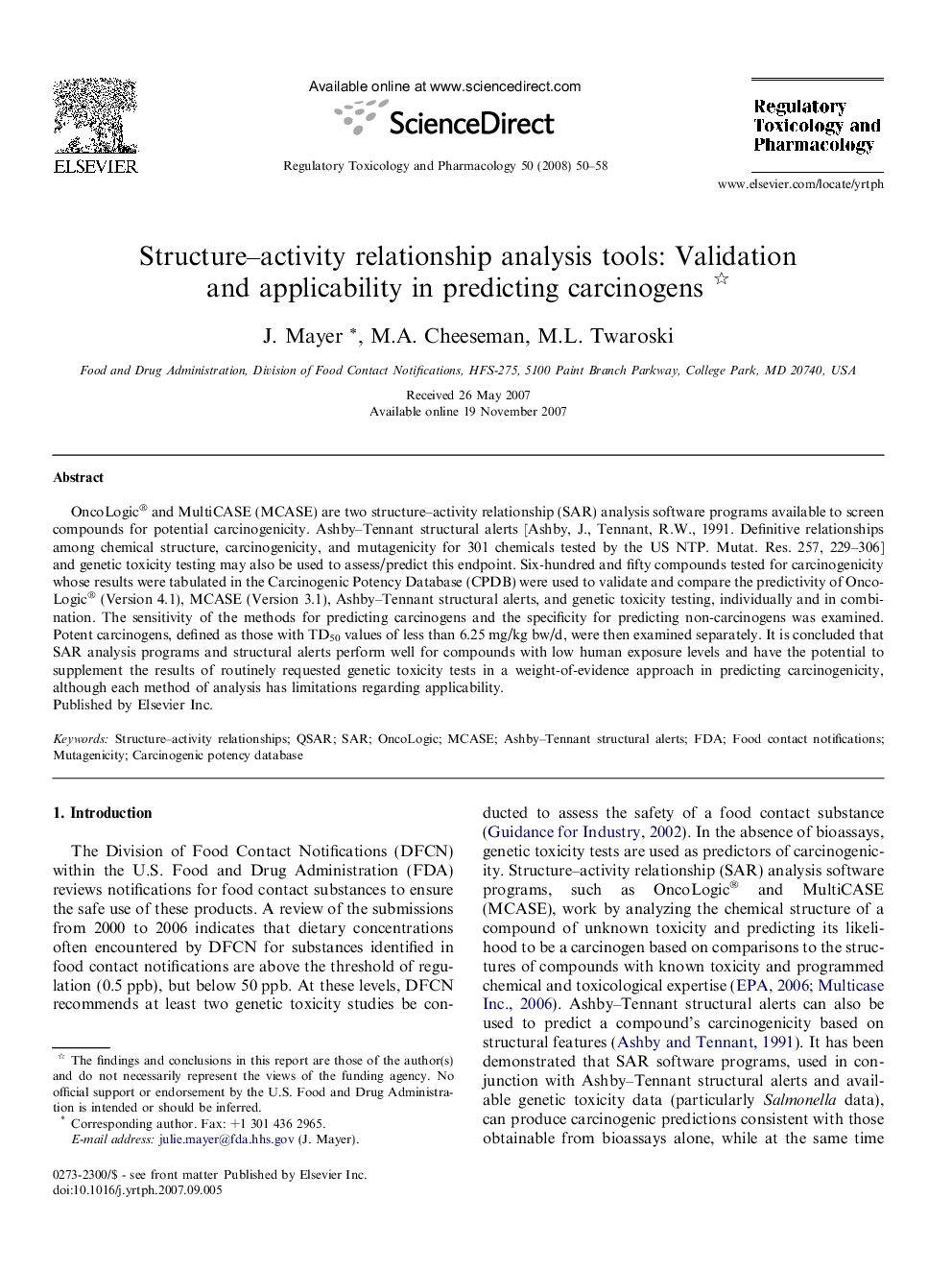| Article ID | Journal | Published Year | Pages | File Type |
|---|---|---|---|---|
| 2593004 | Regulatory Toxicology and Pharmacology | 2008 | 9 Pages |
OncoLogic® and MultiCASE (MCASE) are two structure–activity relationship (SAR) analysis software programs available to screen compounds for potential carcinogenicity. Ashby–Tennant structural alerts [Ashby, J., Tennant, R.W., 1991. Definitive relationships among chemical structure, carcinogenicity, and mutagenicity for 301 chemicals tested by the US NTP. Mutat. Res. 257, 229–306] and genetic toxicity testing may also be used to assess/predict this endpoint. Six-hundred and fifty compounds tested for carcinogenicity whose results were tabulated in the Carcinogenic Potency Database (CPDB) were used to validate and compare the predictivity of OncoLogic® (Version 4.1), MCASE (Version 3.1), Ashby–Tennant structural alerts, and genetic toxicity testing, individually and in combination. The sensitivity of the methods for predicting carcinogens and the specificity for predicting non-carcinogens was examined. Potent carcinogens, defined as those with TD50 values of less than 6.25 mg/kg bw/d, were then examined separately. It is concluded that SAR analysis programs and structural alerts perform well for compounds with low human exposure levels and have the potential to supplement the results of routinely requested genetic toxicity tests in a weight-of-evidence approach in predicting carcinogenicity, although each method of analysis has limitations regarding applicability.
